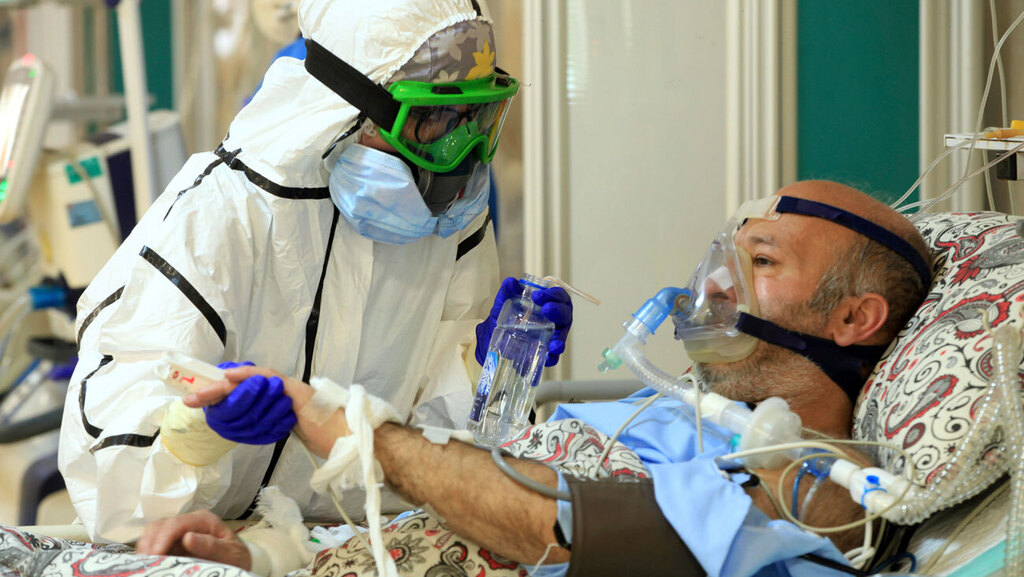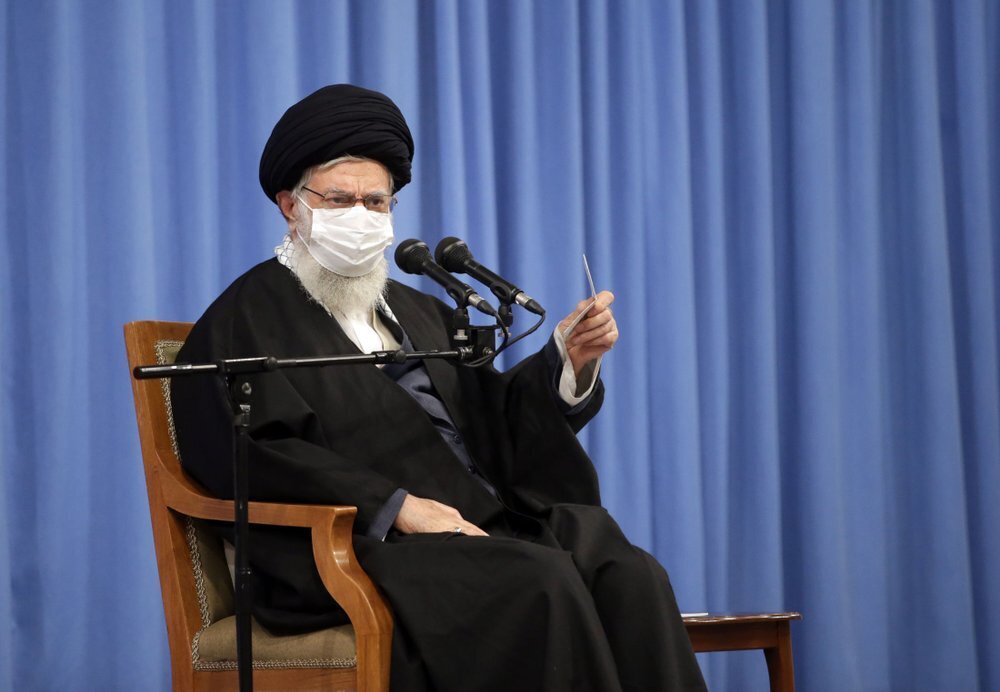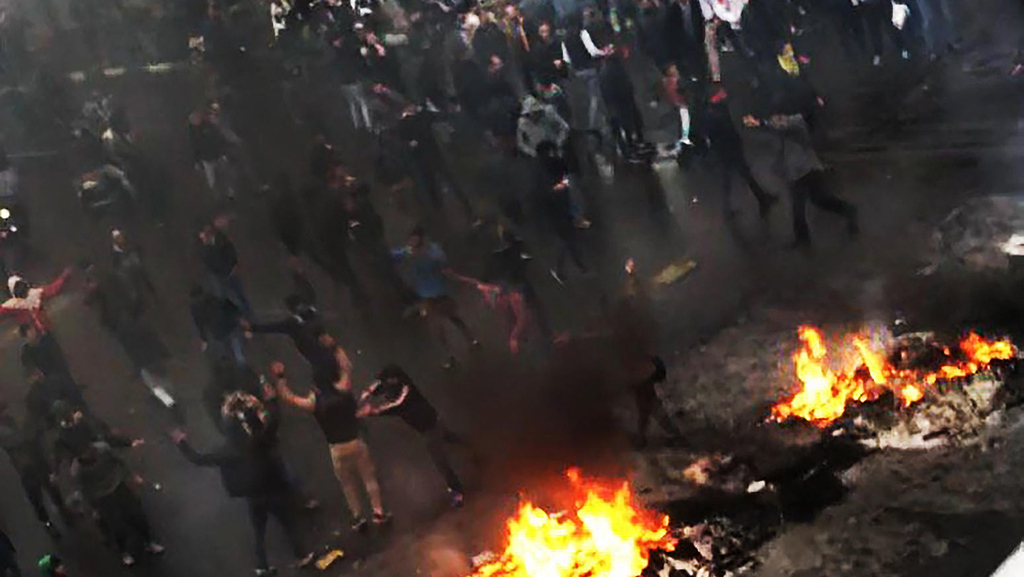The U.S. and Iran have in recent weeks embarked on negotiations for a mutual return to the nuclear deal to limit Tehran's nuclear aspirations, which then-U.S. president Donald Trump abandoned in 2018.
Iran has demanded that the U.S. move first and fully lift the sanctions, for it may not be able to survive measures that even prohibit U.S. companies from dealing with anyone who has have economic ties to Iran.
5 View gallery
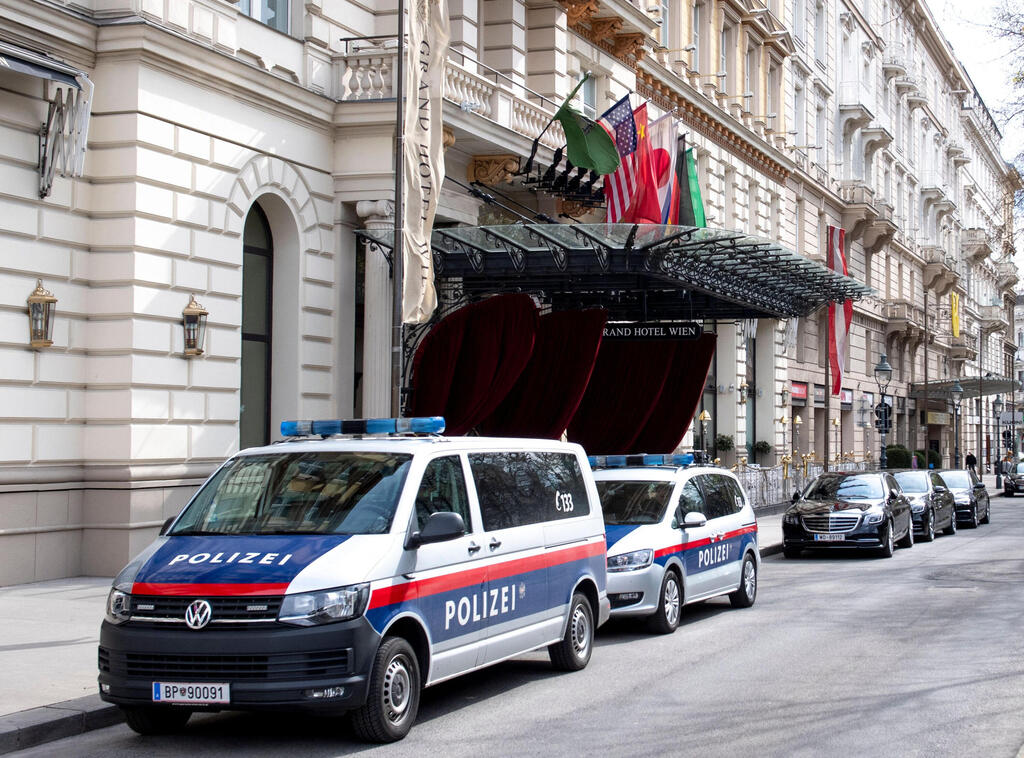

Austrian police outside the Vienna hotel hosting talks on renewing the Iran nuclear deal this month
(Photo: AFP)
“I believe that Iran’s economy is closer to collapse than ever. Those people who believe that Iran’s ‘resistance economy’ has worked as it was resilient to crippling sanctions are right. But the stamina is now fading away,” says Dr. Mahdi Ghodsi, an economist at the Vienna Institute for International Economic Studies and an expert on the Iranian economy.
Dr. Gil Feiler, an expert in Middle Eastern economies and senior researcher at Bar-Ilan University’s Begin-Sadat Center for Strategic Studies, agrees.
“Iran has reached a low point because of Trump’s sanctions. … The [Iranian] rial lost 50% of its worth in less than two years. Meaning that Trump’s sanctions had an immense effect,” Feiler says. “Almost 6 million people are unemployed.”
An April 2021 report by the International Monetary Fund says the Iranian unemployment rate, which currently stands at 10.8%, is expected to increase in the next two years.
In addition to the sanctions, Iran has been hit hard by the coronavirus pandemic.
“Due to sanctions and COVID, Iran’s crisis is a double-edged sword that wounds the society deeper than other countries,” Ghodsi says.
To makes matters worse, the IMF says the country is not expected to vaccinate a significant segment of its population before mid-2022.
Ghodsi points to the high inflation that has plagued the country in recent years as one indication of Iran’s economic predicament.
“Annual inflation was very high [up to 50%] in the past three years,” he says.
“Many people who were receiving monthly cash handouts since the time of the populist [former president Mahmoud] Ahmadinejad, rose out of poverty," he says.
"But because of very high annual inflation since that policy of Ahmadinejad and more strongly since [Trump's] ‘maximum pressure’ campaign, that monthly cash handout is now worth perhaps 1 to 2 kilos of chicken.”
“The Iranian debt reached $254 billion,” says Feiler, pointing to another economic indicator.
“That’s a huge debt and you have to remember that the Iranians aren’t living luxuriously in recent years.”
Feiler points out that for the first time since the Islamic revolution of 1979, Iran last year turned to the IMF for emergency assistance, asking for $5 billion to help fight the pandemic.
The Iranian economy has shrunk in recent years, experiencing almost 13% negative growth in 2018-2019, after the sanctions were put in place.
Despite all this, the Iranian economy isn’t expected to collapse in the very near future, say both experts, even if sanctions remain in place.
According to Ghodsi, the Islamic Republic responded to Trump's "maximum pressure" with domestic "maximum suppression," killing hundreds of protesters in nationwide anti-government demonstrations that erupted in November 2019.
The repression helped the regime silence discontent over the economic hardship created by the sanctions.
In addition to the suppression of dissidents, Feiler points to a recent deal between China and the Islamic Republic, cementing a 25-year agreement to cooperate in trade.
This deal, along with other actions by countries that circumvent American sanctions, allows the regime the breathing room it needs to survive.
5 View gallery
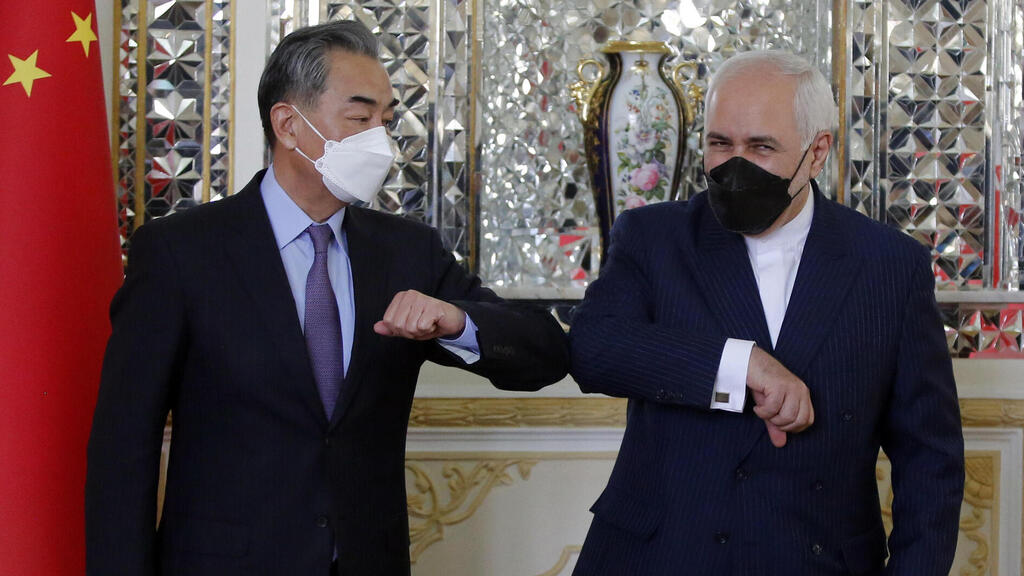

Chinese Foreign Minister Le Yucheng with Iranian counterpart Mohammad Javad Zarif in Tehran in March
(Photo: EPA)
But while Feiler agrees that the Iranian economy won’t collapse tomorrow, he thinks it has limited ability to survive long term should the sanctions remain.
If Trump’s sanctions had stayed in place another four to five years and if and Iranian smuggling had been more closely monitored, the regime would have collapsed, he says.
“What Biden is going to do is throw them a lifeline,” he says.
Discontent caused by the rise in unemployment and poverty would have brought down the regime, says Feiler, which all creates pressure on Tehran to revive the Iranian nuclear deal.
This, Feiler says, is something that the Americans and Europeans have missed.
According to Ghodsi, uncontrolled hyperinflation caused by the government borrowing again from the central bank could make the ticking bomb of cyclical nationwide protests implode into a stronger domestic uprising.
This makes removing the sanctions all the more crucial, he says, and means the Iranians need “to compromise in a manner in which the U.S. can return" to the pact.
Instead of demanding a full lifting of the sanctions, Ghodi says, Tehran should push for a coordinated return to the agreement.
Once the sanctions are out of the way, the Iranian economy is expected to flourish.
“One can expect that Iran’s economy will grow by exporting oil to its level prior to the U.S. secondary sanctions under Trump,” Ghodsi says.
Agreements with other countries will also boost the economy, but Ghodsi cautions that business with Western companies may be slower in resuming because “Western firms may still need some time to evaluate the political risks around Iran.”
Iran “can leap ahead politically, militarily and economically," once sanctions are lifted, says Feiler, something that "would strengthen the regime.”
The Iranian economy has huge potential, Feiler says, warning that this is not necessarily a positive development.
The Western powers, he says, “don’t have a true understanding of the Iranian regime” or the fact that they will be strengthening it, thereby empowering tyranny and encouraging human rights violations.
Reprinted with permission from The Media Line


